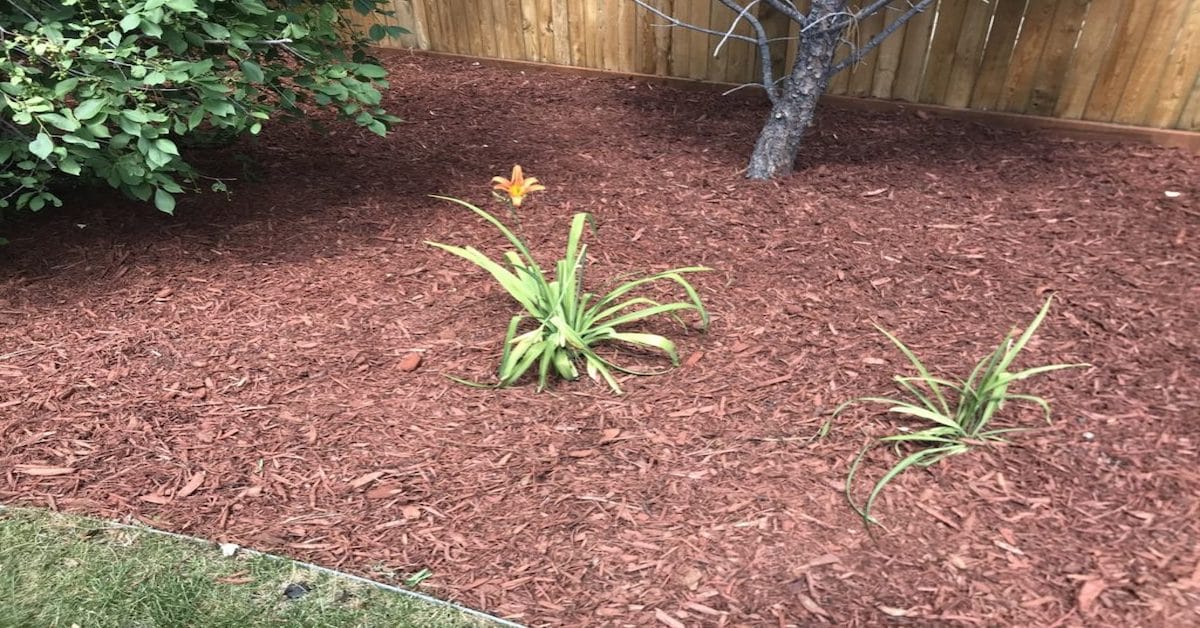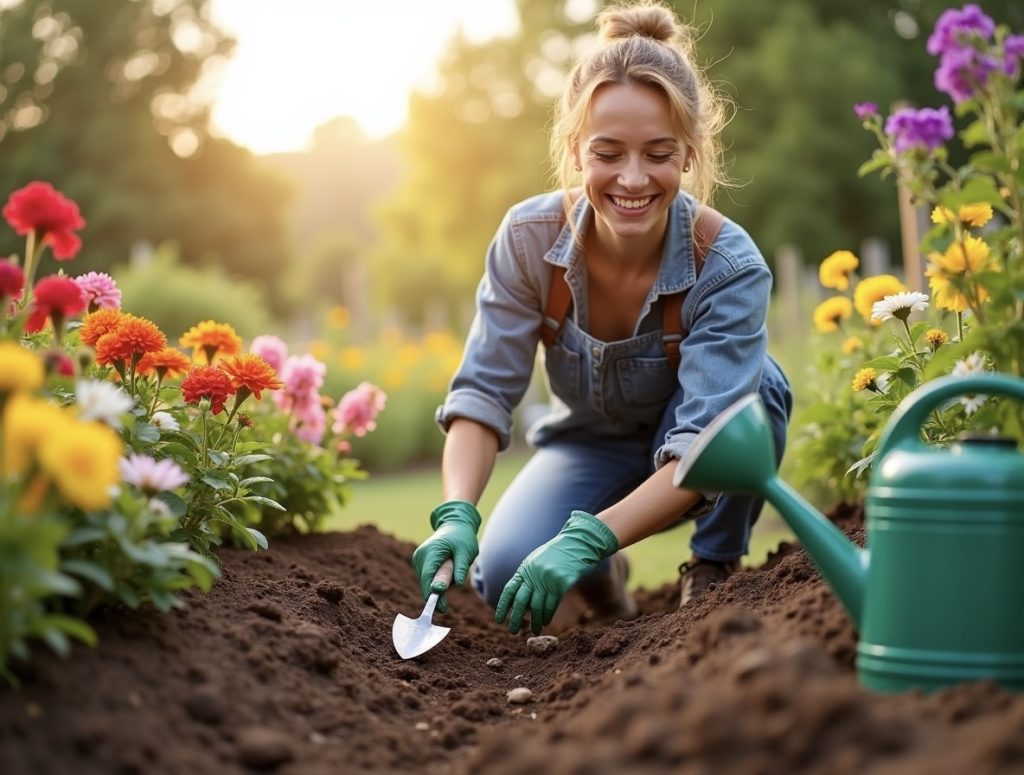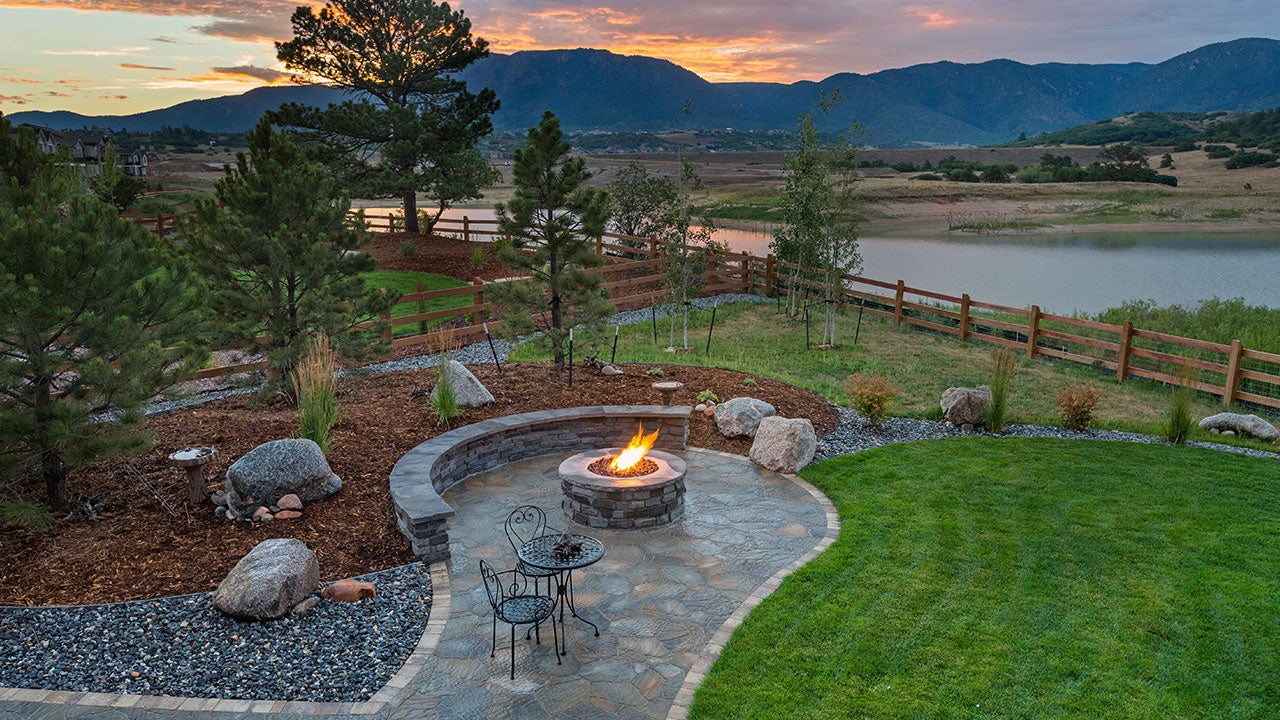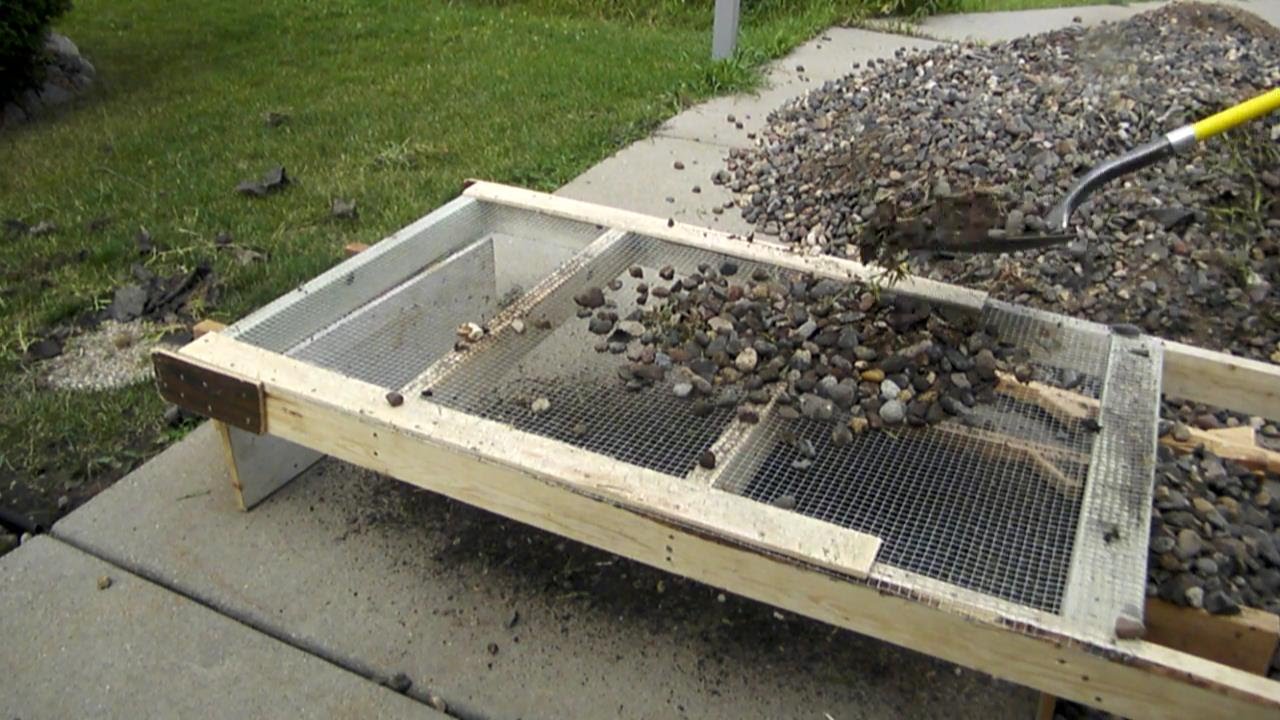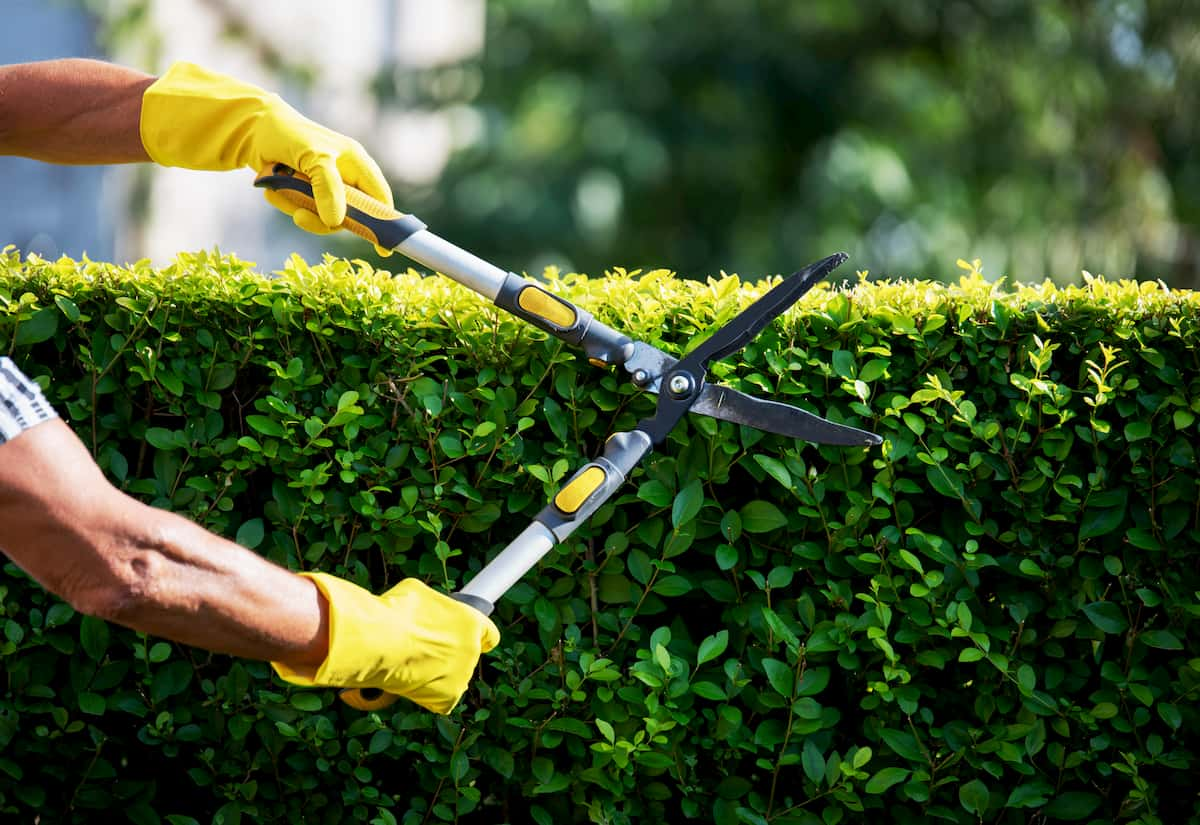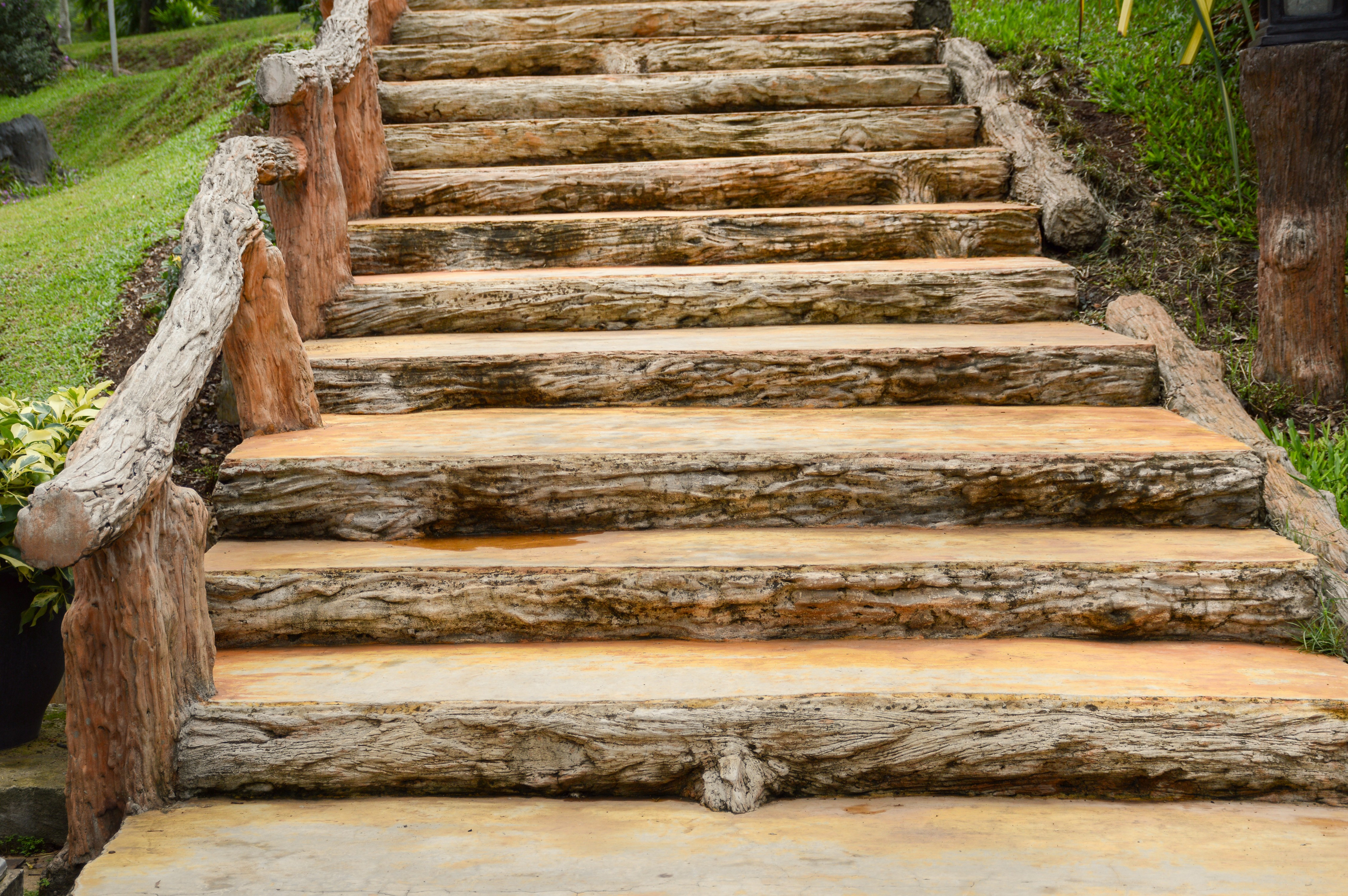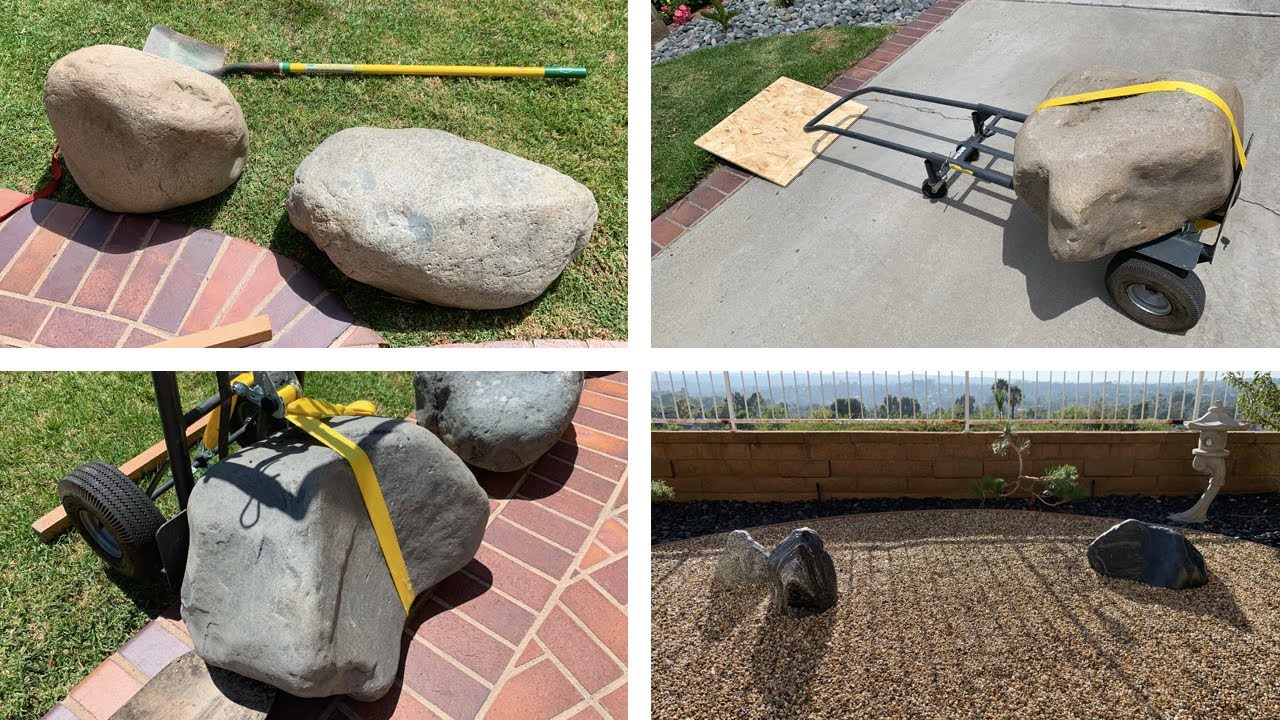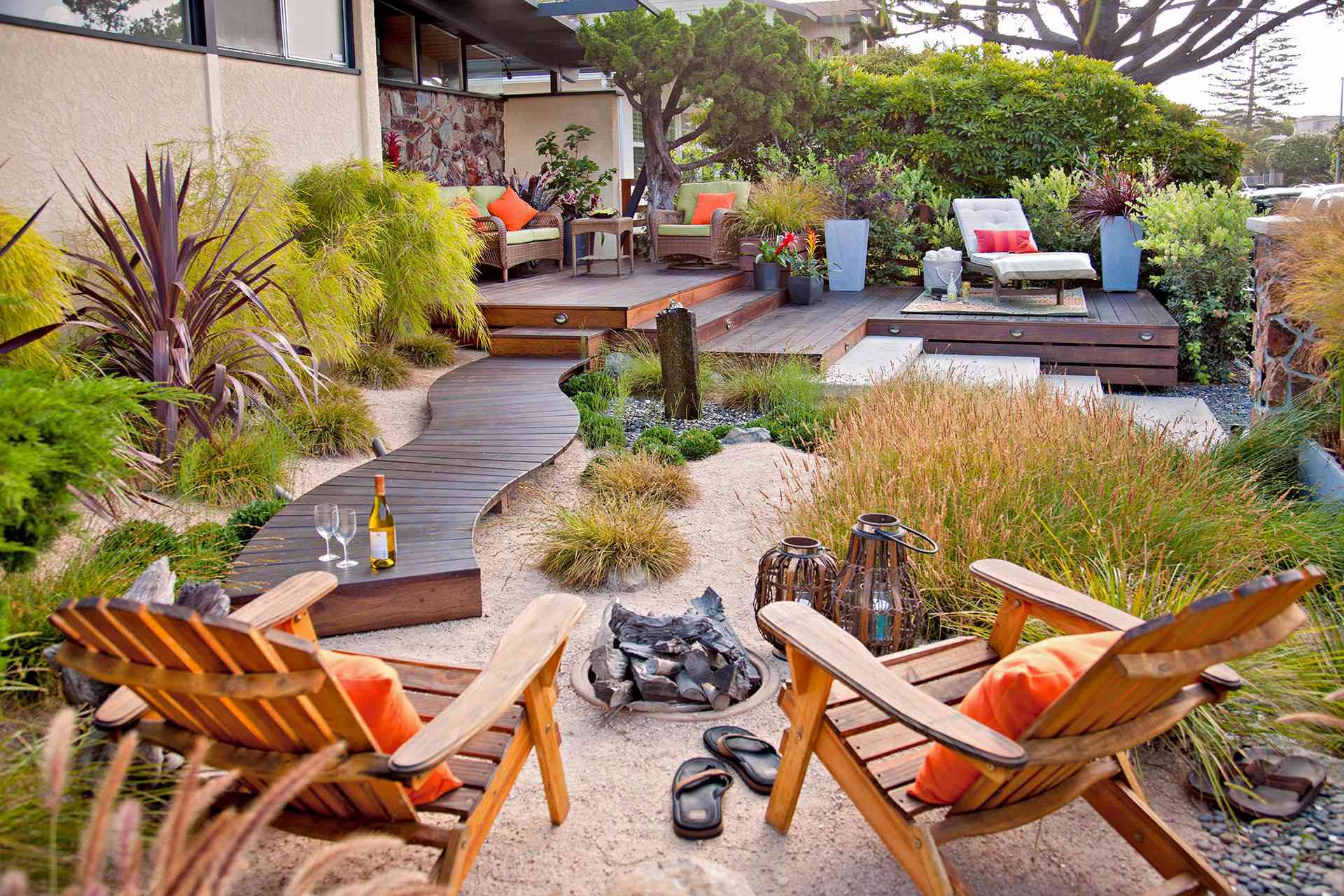Home>Garden Design>Landscape Design>How To Choose Plants For Landscaping
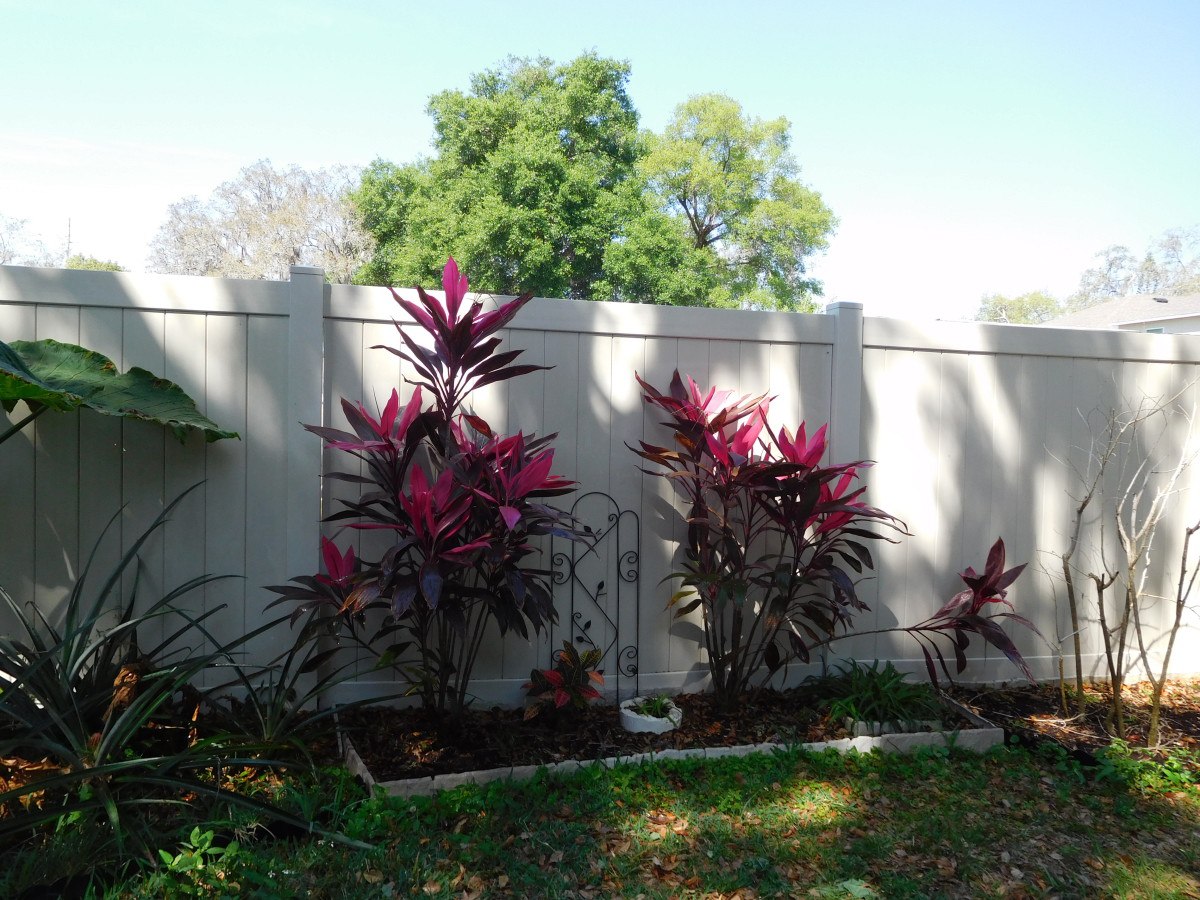

Landscape Design
How To Choose Plants For Landscaping
Modified: February 10, 2024
Learn how to choose the perfect plants for your landscape design. Discover tips and techniques to create a stunning outdoor space that reflects your personal style.
(Many of the links in this article redirect to a specific reviewed product. Your purchase of these products through affiliate links helps to generate commission for Chicagolandgardening.com, at no extra cost. Learn more)
Table of Contents
- Introduction
- Understanding Your Landscape
- Assessing Soil and Sunlight Conditions
- Considering Climate and Hardiness Zones
- Choosing Plants Based on Purpose
- Selecting Plants for Visual Appeal
- Incorporating Different Plant Types
- Considering Maintenance Requirements
- Examining Water Needs
- Managing Pests and Diseases
- Taking Note of Plant Size and Growth Rate
- Ensuring Proper Planting Techniques
- Conclusion
Introduction
Welcome to the world of landscape design! Transforming your outdoor space into a beautiful and functional sanctuary is an exciting endeavor, and choosing the right plants is a crucial step in achieving your vision. Whether you’re a novice gardener or a seasoned plant enthusiast, this comprehensive guide will provide you with the necessary knowledge to make informed decisions when selecting plants for your landscape.
A well-planned landscape can greatly enhance the aesthetics, value, and functionality of your property. The right combination of plants can create a harmonious and inviting environment, while also providing privacy, shade, or food for wildlife. Understanding the specific needs and characteristics of different plant species will enable you to create a well-balanced and sustainable landscape design.
When it comes to choosing plants for your landscape, there are several factors to consider. Soil type, exposure to sunlight, climate, purpose, and maintenance requirements all play a significant role in determining the suitability of a particular plant for your outdoor space. By taking the time to assess these factors, you can select plants that will thrive in your specific conditions and enhance the overall beauty and functionality of your landscape.
In this guide, we will explore various aspects of choosing plants for landscaping, from understanding your landscape and assessing environmental conditions to selecting plants based on their purpose, visual appeal, and maintenance requirements. We will also discuss important factors such as water needs, managing pests and diseases, plant size, growth rate, and proper planting techniques. By the end of this guide, you will have the knowledge and confidence to create a stunning landscape that reflects your personal style and brings joy for years to come.
Understanding Your Landscape
Before diving into the world of plant selection, it’s important to have a thorough understanding of your landscape. Take some time to observe and analyze your outdoor space. Consider the size, shape, and topography of your yard, as well as any existing landscaping features, such as trees or structures. Understanding these aspects will help you plan and design your landscape more effectively.
Take note of the microclimates within your landscape. Certain areas may receive more sunlight, while others may be shaded or have poor drainage. These microclimates can significantly impact plant growth and survival. By identifying these variations, you can choose plants that are well-suited to each specific area of your yard.
Consider the overall style and theme you want to achieve in your landscape. Do you prefer a formal or informal design? Are you aiming for a specific color scheme or architectural style? Understanding your desired aesthetic will guide your plant selection process and help create a cohesive and visually pleasing landscape.
Additionally, think about the purpose of your landscape. Are you looking to create a tranquil garden retreat, a vibrant flowerbed, or a functional outdoor entertaining area? Different plants can serve different purposes, so it’s important to align your plant choices with your intended use of the space.
Furthermore, assess the soil conditions in your landscape. Soil type, pH level, and fertility are all factors that can influence plant growth. Conduct a soil test to determine its composition and nutrient content. This information will help you select plants that are well-suited to your soil and ensure they receive the necessary nutrients for healthy growth.
Understanding your landscape is the first step toward creating a successful and thriving garden. By taking the time to assess its characteristics and identify your goals and preferences, you can make informed decisions when selecting plants that will flourish in your specific environment.
Assessing Soil and Sunlight Conditions
Two critical factors that significantly affect plant growth and health are soil conditions and sunlight availability. Assessing these conditions in your landscape is essential for selecting plants that will thrive in your specific environment.
Start by examining the soil in your garden. Different plants have different soil preferences, so understanding your soil’s composition is crucial. You can do a simple soil test using a DIY pH testing kit or by sending a sample to a soil testing laboratory. This will help you determine the pH level, nutrient content, and organic matter in your soil, allowing you to make informed decisions on plant selection.
Soil texture is also important to consider. Soil can be classified as sandy, loamy, or clayey. Sandy soil drains quickly but may require more frequent watering and fertilization. Clayey soil retains moisture, but it can become compacted, leading to drainage issues. Loamy soil is a well-balanced mixture of sand, silt, and clay, offering good drainage and moisture retention. Understanding your soil texture will help you choose plants that are adapted to its characteristics.
Next, assess the sunlight conditions in your landscape. Observe how the sunlight moves across your garden throughout the day. Identify areas that receive full sun, partial sun, or shade. Different plants have varying light requirements, so matching the light conditions in your landscape with the plant’s needs is crucial.
Full sun refers to areas that receive at least six to eight hours of direct sunlight per day. Many flowering plants, vegetables, and herbs thrive in full sun conditions. Partial sun/shade areas receive filtered or dappled sunlight for a portion of the day. Shade refers to areas that receive minimal direct sunlight. Shade-loving plants, such as ferns and hostas, are appropriate for these areas.
When assessing sunlight conditions, also consider any obstructions, such as trees or buildings, that may cast shadows in certain parts of your landscape. These shaded areas may have unique microclimates that can impact plant growth. Take note of which plants would be suitable for each level of sunlight exposure in your garden.
By understanding the soil conditions and sunlight availability in your landscape, you can choose plants that are well-suited to these factors. Matching the plant’s preferences with your garden’s conditions will ensure their successful establishment and growth, ultimately leading to a thriving and beautiful landscape.
Considering Climate and Hardiness Zones
When selecting plants for your landscape, it’s crucial to take the climate and hardiness zones into consideration. Climate refers to the long-term weather patterns of a specific region, including temperature, rainfall, and humidity, while hardiness zones provide a standardized way to assess a plant’s ability to survive in a particular climate.
Start by researching and understanding the climate of your region. Is it characterized by a hot and dry desert climate, a humid subtropical climate, or a cool and temperate climate? Different plants have adapted to thrive in specific climatic conditions.
Next, determine the hardiness zone of your garden. Hardiness zones are based on the average minimum winter temperature of a specific area. Each zone is further divided into subzones to provide a more accurate representation of the local climate. The United States Department of Agriculture (USDA) has established a hardiness zone map that divides North America into various zones. By identifying your hardiness zone, you can ensure that the plants you select can withstand the cold temperatures of your region.
When choosing plants, look for those that are recommended for your specific hardiness zone. These plants are more likely to survive and thrive in your climate. Keep in mind that some plants may be suitable for multiple zones, while others may be more specific. Selecting plants that are well-adapted to your zone will increase their chances of long-term success.
In addition to hardiness zones, consider specific microclimates within your landscape. Factors such as elevation, proximity to bodies of water, and exposure to wind can create variations in temperature and overall climate. These microclimates can influence the success of certain plants. For example, a shaded area near a body of water may have cooler temperatures and higher humidity, allowing for the growth of plants that prefer a more temperate climate.
Overall, considering the climate and hardiness zones is crucial when selecting plants for your landscape. By choosing plants adapted to your specific climate and hardiness zone, you will increase their chances of survival and success in your outdoor space.
Choosing Plants Based on Purpose
Every landscape has a purpose, whether it’s to create a peaceful retreat, a vibrant flower garden, or a functional space for outdoor activities. When choosing plants for your landscape, it’s essential to consider their purpose and how they will contribute to the overall design and functionality of your outdoor space.
If you’re looking to create a peaceful and tranquil garden, consider incorporating plants with soothing colors and textures. Ornamental grasses, flowering shrubs, and aromatic herbs can create a serene atmosphere. Choose plants with soft foliage and delicate blooms to enhance the sense of calmness in your garden.
For those aiming to create a vibrant flower garden, choose plants that produce a continuous display of colorful blooms. Look for annuals and perennials that thrive in your climate and provide a range of colors, heights, and bloom times. Consider incorporating a mix of flower varieties to ensure a constant flow of color throughout the growing season.
If your landscape is intended for outdoor activities and entertainment, select plants that can provide shade, privacy, or serve as windbreaks. Consider planting large trees or using tall shrubs to create natural barriers and define different areas of your outdoor space. Evergreen plants can provide privacy year-round, while deciduous trees can offer shade during the hot summer months.
For edible landscapes or vegetable gardens, choose plants that are not only productive but also visually appealing. Incorporate herbs, vegetables, and fruit trees that are suitable for your climate and culinary preferences. Consider integrating edible plants with ornamental varieties to create a visually pleasing and functional garden space.
Incorporating plants with specific purposes into your landscape design will enhance the functionality and aesthetics of your outdoor space. By carefully selecting plants that align with your desired goals and intended use, you can create a landscape that is both beautiful and practical.
Selecting Plants for Visual Appeal
The visual appeal of your landscape is a key aspect in creating a beautiful and inviting outdoor space. When selecting plants, it’s important to consider their visual characteristics, such as color, texture, form, and seasonal interest, to create a well-designed and visually pleasing landscape.
Color plays a significant role in the overall aesthetics of your landscape. Consider the color scheme you want to achieve and select plants that complement and harmonize with each other. Choose a mix of plants with different flower colors, foliage hues, and even bark colors to add depth and interest to your garden throughout the year.
Texture refers to the surface quality of a plant’s leaves, flowers, or bark, and it adds visual interest to your landscape. Combining plants with different textures creates a dynamic and visually appealing garden. Consider incorporating plants with smooth leaves, spiky foliage, feathery flowers, or rough bark to add variety and intrigue to your outdoor space.
The form of a plant refers to its shape and structure. Plants with different forms – such as tall and columnar, low and spreading, or rounded and bushy – can be strategically placed to create a visually balanced and pleasing composition. Incorporate plants of various heights and shapes to add dimension and structure to your landscape design.
Seasonal interest is another important consideration when selecting plants. Look for plants that offer different visual characteristics throughout the year, such as flowers in the spring and summer, vibrant foliage in the fall, and interesting bark or evergreen leaves in the winter. By incorporating plants with diverse seasonal interest, you can ensure that your landscape remains visually appealing throughout all seasons.
When designing your landscape, it’s also important to consider the principles of proportion, balance, and repetition. By repeating certain plants or visual elements throughout your garden, you can create a sense of unity and cohesion. Strive for a balanced distribution of plants, both in terms of their size and visual impact, to create a harmonious and visually appealing landscape.
By intentionally selecting plants for their visual appeal and incorporating them strategically into your landscape design, you can create an outdoor space that is visually stunning and a joy to behold throughout the year.
Incorporating Different Plant Types
When designing your landscape, incorporating a variety of plant types can add interest, diversity, and functionality to your outdoor space. By selecting and combining different plant types, you can create a dynamic and visually captivating garden design.
One fundamental plant type to consider is trees. Trees not only provide shade and privacy but also add structure and height to your landscape. They can serve as focal points or create a canopy-like effect. Choose trees that are well-suited to your climate and have a growth habit that complements your overall design.
Shrubs are another essential plant type that can be used to add texture, color, and depth to your landscape. They can be placed as hedges for privacy, as background plants to create a lush backdrop, or as focal points themselves. Consider incorporating shrubs of varying sizes, shapes, and flowering or foliage characteristics to create a diverse and visually appealing garden.
Perennials are plants that live for more than two years and provide a burst of color and beauty in your landscape. They come in various forms, including flowering perennials, ornamental grasses, and groundcover plants. Perennials offer the advantage of coming back year after year, adding seasonal interest and reducing the need for replanting.
Annuals are plants that complete their lifecycle within one year and are a great way to bring vibrant color and seasonal variation to your garden. They are versatile and offer a wide range of flower colors and forms. Annuals can be used in containers, borders, or mixed with perennials to add a pop of color and visual interest.
Groundcovers are low-growing plants that spread and cover the ground, providing a carpet-like effect. They are excellent for filling in gaps between larger plants, preventing erosion, and suppressing weed growth. Groundcovers can be used to create a cohesive and finished look to your landscape while also reducing maintenance needs.
Using vines and climbing plants is another way to add vertical interest and create focal points in your landscape. They can be trained to grow on trellises, pergolas, or walls, adding height and texture to your outdoor space. Vines can also soften harsh architectural features or create natural privacy screens.
Lastly, consider incorporating aquatic plants if you have a pond or water feature in your landscape. Water lilies, lotus, and various floating or submerged plants can add a tranquil and serene ambiance while also providing habitat for wildlife.
By incorporating a range of plant types, including trees, shrubs, perennials, annuals, groundcovers, vines, and aquatic plants, you can create a diverse and visually appealing landscape that is rich in texture, color, and functionality. Experiment with different combinations and arrangements to create a garden that reflects your personal style and vision.
Considering Maintenance Requirements
When choosing plants for your landscape, it’s important to consider their maintenance requirements. Different plants have varying needs in terms of pruning, watering, fertilizing, and overall care. Assessing the time and effort you’re willing to dedicate to maintaining your garden will help you select plants that align with your maintenance preferences.
If you have limited time or prefer a low-maintenance garden, opt for plants that are known for their ease of care. Look for plants that are drought-tolerant, disease-resistant, and require minimal pruning. Native plants are often a good choice as they are well-adapted to the local climate and often require less maintenance.
Consider the size and growth habit of the plants you select. Fast-growing plants may require more frequent pruning or maintenance to keep them in check. On the other hand, slow-growing plants may require less attention but may take longer to fill in the desired space. Understand the growth rate of the plants and assess if it aligns with your desired maintenance level.
Some plants may have specific needs when it comes to soil type, pH level, or nutrient requirements. Understanding these requirements will help you provide the necessary care for your plants. If you don’t have the time or inclination for regular soil amendments or complex fertilizing routines, choose plants that are adaptable to a wide range of soil conditions.
Consider the water requirements of the plants you select. Some plants are more drought-tolerant and require less frequent watering, while others need regular irrigation. Match the water needs of the plants to your irrigation system or be prepared to provide supplemental watering as needed.
Think about the amount of time you’re willing to devote to weeding. Some plants may be more prone to weed competition and require regular maintenance to keep their surrounding area clean and weed-free. Others may have dense foliage that helps prevent weed growth. Choose plants that fit your weed management preferences.
Lastly, think about the overall aesthetics and desired look of your landscape. Some plants may require more grooming or deadheading to maintain their appearance, while others have a more natural or wild look that requires less frequent maintenance. Decide on the level of groomed or untamed look you prefer and choose plants accordingly.
By considering the maintenance requirements of the plants you select, you can create a landscape that suits your desired level of care and maintenance. Understanding your own time and commitment allows you to choose plants that will thrive in your garden while also aligning with your maintenance preferences and capabilities.
Examining Water Needs
Water is a vital resource for plant growth and health, and understanding the water needs of different plants is crucial for maintaining a thriving and sustainable landscape. When selecting plants for your garden, it’s important to consider their specific water requirements and ensure they are compatible with your watering capabilities.
Some plants, known as drought-tolerant or xerophytic plants, are adapted to survive and thrive in dry conditions with minimal water. These plants have evolved to store water in their leaves or stems, or have deep root systems that can access water deep in the soil. If you live in an arid region or have limited access to water, choosing drought-tolerant plants will help conserve water and reduce maintenance needs.
On the other hand, some plants have high water requirements and need regular and consistent watering to survive and thrive. These plants are often found in wetland or boggy environments or are native to regions with high rainfall. If you live in an area with ample water resources or have an irrigation system in place, you can incorporate these water-loving plants into your landscape.
Consider the natural rainfall patterns in your region and how they correspond to the water needs of the plants you’re considering. If you live in an area with regular rainfall, you may be able to select a wider variety of plants with different water needs. However, if you live in a dry or drought-prone region, it’s essential to focus on plants that are adapted to low water conditions to conserve water and reduce the need for supplemental irrigation.
It’s also important to consider the soil drainage in your garden. Some plants prefer well-draining soil and can suffer from root rot or other issues if the soil retains water for too long. Other plants, especially those that thrive in wetland or boggy conditions, require soil that holds water for longer periods. Understanding your soil’s drainage capabilities will help you select plants that are compatible with your specific soil conditions.
When planning your garden, group plants with similar water needs together. This practice, known as hydrozoning, ensures that plants with different water requirements are not watered in the same manner, allowing for more efficient irrigation. For example, you can group drought-tolerant plants in one area that requires less frequent watering, while grouping high-water requirement plants together in another zone that receives more frequent irrigation.
By examining the water needs of the plants you select and considering the natural rainfall patterns, soil drainage, and your watering capabilities, you can create a water-efficient and sustainable landscape that promotes the health and vitality of your plants while conserving this precious resource.
Managing Pests and Diseases
Pests and diseases can pose significant challenges to the health and vitality of your plants. To maintain a thriving landscape, it’s important to be proactive in managing and preventing these issues. By adopting good gardening practices and implementing appropriate pest and disease control strategies, you can minimize the impact and promote the long-term health of your plants.
One essential step in pest and disease management is to maintain a healthy growing environment for your plants. Healthy plants are more resistant to pests and diseases, so ensure that your plants receive adequate sunlight, water, and nutrients. Proper spacing between plants and good air circulation can also help prevent diseases that thrive in moist or crowded conditions.
Regularly inspect your plants for signs of pests or diseases. Look for discolored leaves, wilting, stunted growth, chewed foliage, or unusual spots or markings. Early detection allows for prompt action and prevents the issue from spreading to other plants. Remove any affected plant parts and dispose of them properly to minimize the risk of further contamination.
To control pests, you can start by practicing cultural controls. These include techniques such as hand-picking insects, using a strong jet of water to dislodge pests, or erecting physical barriers such as nets or fences to keep pests away. Encouraging beneficial insects, birds, or toads in your garden can also help manage pest populations naturally.
Biological controls involve introducing natural predators or parasites that feed on pests. These can include ladybugs, lacewings, or nematodes, which can help control pests without the need for chemical intervention. It’s important to conduct research and ensure that the biological controls you choose are appropriate for the specific pests you are dealing with.
If necessary, chemical controls such as insecticides or fungicides can be used. However, it’s important to use these products judiciously and responsibly, following the instructions on the label. Consider using organic or natural pest control products whenever possible to minimize the impact on beneficial insects and the environment.
Preventive measures are also key in managing pests and diseases. Choose plant varieties that are resistant to common pests or diseases in your area. Proper sanitation, such as cleaning tools and containers, can also help prevent the spread of pathogens. Additionally, avoiding over-fertilization or improper watering practices can prevent conditions that attract pests or promote disease development.
Regular monitoring, prompt action, and a balanced approach to pest and disease management are essential for maintaining the health and vitality of your plants. By implementing these strategies, you can manage pests and diseases effectively, promote plant resilience, and ensure the longevity of your beautiful landscape.
Taking Note of Plant Size and Growth Rate
When selecting plants for your landscape, it’s important to consider their size and growth rate to ensure they fit harmoniously within your outdoor space. Understanding the potential size and growth habits of plants will help you avoid overcrowding, ensure proper spacing, and create a visually balanced and well-maintained garden.
Consider the mature size of plants before planting. Some plants, such as trees or large shrubs, can grow to significant heights and widths, creating a focal point or providing shade and privacy. These plants should be placed where their size can be accommodated without obstructing views or encroaching on other plants or structures.
Alternatively, if you have a small garden or limited space, choose compact or dwarf varieties that have a smaller mature size or can be pruned to maintain a smaller form. This allows you to enjoy a wide variety of plants without overwhelming your outdoor space.
It’s also important to consider the growth rate of the plants you choose. Some plants have slow growth rates, taking several years to reach their mature size, while others grow rapidly and may require regular pruning to keep them in check. Understanding the growth rate helps you plan for future maintenance needs and ensures that plants won’t outgrow their allotted space too quickly.
Proper spacing is essential to allow plants to grow and thrive without competition for light, water, and nutrients. Be sure to consider the ultimate size of plants when determining their placement. Research the recommended spacing guidelines for each specific plant to allow for adequate air circulation and prevent overcrowding.
When designing your garden, consider the overall aesthetic and visual impact of different plant sizes. Combining plants of varying heights, from groundcovers to tall trees, creates depth and interest. Consider layering plants with different sizes and growth habits to create a visually appealing and well-balanced landscape.
Regular pruning is often necessary to maintain the shape and size of plants, especially those that have a fast growth rate or tend to become unruly. Pruning not only keeps plants in check but also promotes healthier growth and enhances their overall appearance. Incorporate pruning into your regular maintenance routine to ensure your landscape looks its best.
By taking note of plant size and growth rate, you can select plants that fit appropriately within your outdoor space, create a visually appealing landscape, and reduce future maintenance needs. Understanding how plants will grow over time allows you to plan and design your garden with foresight, ensuring a thriving and well-maintained landscape for years to come.
Ensuring Proper Planting Techniques
Proper planting techniques are vital for the successful establishment and growth of plants in your landscape. Following the correct procedures ensures that plants have a strong start, establish healthy root systems, and thrive in their new surroundings. Here are essential steps to consider when planting your chosen plants.
Start by preparing the planting area. Remove any existing vegetation, weeds, or rocks that may interfere with the growth of your new plants. Ensure the soil is well-drained and amend it with organic matter, such as compost, to improve its fertility and texture.
Dig a hole that is wide and deep enough to accommodate the plant’s root ball. The hole should be slightly wider than the root ball and deep enough so that the top of the root ball is level or slightly above ground level. Place the plant in the hole, ensuring that it is centered and upright.
Carefully backfill the hole with soil, gently firming it around the roots. Avoid compacting the soil too much, as proper aeration is crucial for root development. Create a shallow basin around the plant to help capture and direct water to the roots.
Water the newly planted tree or shrub thoroughly to settle the soil, ensuring good soil-to-root contact. Apply a layer of mulch around the plant, leaving a few inches of space around the stem or trunk to prevent moisture retention and potential rot. Mulch helps retain soil moisture, suppress weed growth, and insulate the roots.
Ensure proper watering after planting, especially during the establishment phase. Most plants require regular watering until their roots become well-established. Monitor soil moisture levels and adjust watering accordingly, ensuring that the soil remains evenly moist but not waterlogged. However, avoid overwatering, as it can lead to root rot and other issues.
Consider staking or supporting taller plants to provide stability during windy conditions or until they can support themselves. Use soft ties or materials that will not damage the plant’s stems or branches. Regularly check the stakes and ties to ensure they are not causing any damage or restricting growth.
Depending on the plant, it may be necessary to prune or remove any damaged or diseased portions after planting. Pruning stimulates new growth, removes any potential sources of disease or pest issues, and encourages a well-shaped and healthy plant.
Regularly monitor the plants for signs of stress, diseases, or pest infestations. Early detection allows for prompt action and helps prevent the spread of issues. Address any problems promptly, using appropriate pest control methods or seeking advice from a knowledgeable professional if necessary.
By following proper planting techniques, you can ensure that your plants have the best start in their new environment. Taking care to properly prepare the soil, plant with care, provide adequate water and support, and monitor the plants’ health will contribute to their successful establishment and long-term growth in your landscape.
Conclusion
Designing and creating a beautiful landscape is an exciting and rewarding endeavor. Choosing the right plants is a vital step in achieving a stunning and functional outdoor space. By considering various factors such as understanding your landscape, assessing soil and sunlight conditions, considering climate and hardiness zones, selecting plants based on their purpose and visual appeal, incorporating different plant types, considering maintenance requirements, examining water needs, managing pests and diseases, taking note of plant size and growth rate, and ensuring proper planting techniques, you can create a landscape that reflects your vision and flourishes for years to come.
Remember, every landscape is unique, and it’s essential to tailor your plant selection to suit your specific environment and preferences. Whether you have a small urban garden or a sprawling suburban yard, understanding your landscape’s characteristics allows you to choose plants that will thrive and enhance your outdoor space.
As you embark on your landscape design journey, consider the aesthetic goals you want to achieve, the purposes you wish your landscape to serve, and the level of maintenance you’re willing to commit to. With careful consideration and attention to detail, you can create a landscape that showcases a harmonious balance of colors, textures, and forms.
Remember to research and select plants that are well-suited to your climate, hardiness zone, and the specific conditions of your garden. By choosing plants that are adapted to your environment, you can ensure their long-term success and minimize the need for excessive care or interventions.
Regular gardening practices, such as proper watering, pruning, and monitoring for pests and diseases, are integral to the health and vitality of your plants. By adopting these practices and following proper planting techniques, you can set the foundation for a thriving and visually stunning landscape that brings joy and relaxation for years to come.
Take the time to plan, research, and select plants that resonate with your personal style and the overall vision of your outdoor space. With a bit of patience, knowledge, and creativity, you can transform your landscape into a captivating sanctuary that reflects your individuality and highlights the natural beauty of your surroundings.
